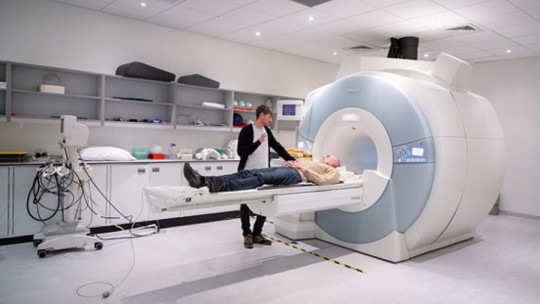Psychology is the science that studies the mind and mental processes. However, these processes are not directly observable by humans nor are they easily quantifiable. We can observe that a person acts extroverted, but it is not easy to determine to what degree he is.
For this reason it has become necessary to design different mechanisms and ways of measuring psychic characteristics. The development of these methods, their application, the analysis of these data and the study of their reliability and validity are the object of study of psychometry Next we will talk about this area of psychology.
Psychometrics as a measurement of the psyche
Psychometrics is understood as the discipline that is responsible for the quantitative measurement of mental processes and abilities
In this way, a numerical value can be assigned to specific characteristics and events, allowing comparison and contrast with other people or with certain criteria that can be used to establish and verify theories and hypotheses about the functioning of the mind. Thanks to psychometrics it is possible to quantify and operationalize the psychic having largely allowed the development of psychology as a science.
Since the mind is something that cannot be directly observed, it is necessary to use elements that can indicate the aspect to be treated and the degree to which it is possessed, using observable indicators such as behavior or the record of physiological activity.
Broadly speaking, we can say that psychometrics uses statistical calculation and analysis of results in order to be able to acquire information regarding a specific construct (which speaks about some psychological aspect) through a measurement element that has previously been created.
Which comprises?
As we have seen, psychometrics is the branch of psychology that is responsible for measuring specific aspects of the mind. This involves, on the one hand, establishing a theory that can link mental characteristics with measurable elements, on the other hand, the creation of measurement scales, and finally, it involves the development of mechanisms and instruments that allow such measurement.
1. The creation of the theory
Regarding the first aspect, psychometry establishes the possibility of measuring unobservable constructs from elements that can serve to indicate them, such as characteristics of behavior. It also elaborates and establishes how they can be observed and, based on different data, tries to establish what these indicators can be.
2. The scales
The creation of scales or scaling is another of the basic elements that psychometrics is responsible for. These scales allow us to assign specific values to the variables analyzed , so that they can be operationalized and worked with. It is about making a specific variable quantifiable.
3. Measuring instruments
The third and last of the aforementioned aspects is the creation, based on the scales previously developed in order to quantify a specific variable, of instruments that allow said measurement.
Clear examples of them are psychological tests In this elaboration we must take into account that it is necessary to seek objectivity, consistency, the ability to discriminate between subjects, and that they are valid and reliable.
Some relevant concepts
As a discipline that allows the measurement of the unobservable from the observable, psychometrics must take into account various concepts so that said measurement is correct and representative. Some of the most relevant concepts are the following.
1. Correlation
The concept of correlation refers to the existence of some type of link between two variables which means that changes in one of them coincide with variations in the second, although this does not ensure that the relationship is cause-consequence.
2. Variance and standard deviation
Variance is the degree to which the scores of a test or the same variable they can disperse The standard deviation refers to how much the scores are usually expected to disperse in relation to the average.
3. Reliability
Reliability refers to the degree to which an item or element used in measuring a characteristic does not produce errors obtaining consistent results in different measurements of the same characteristic in the same subject and context.
4. Validity
Validity is understood as the degree to which the elements we are using to measure it is measuring what it wants to measure There are various types of validity, such as construct validity, content validity or ecological validity.
A little history
The history of psychology is closely linked to the measurement of characteristics and capabilities of individuals. Psychology as a science would not appear until the creation of the first psychology laboratory at the hands of Wilhelm Wundt, who would begin to carry out experiments in which he tried to measure reaction times and would take into account subjective aspects through the method of introspection
However, it is considered that the birth of psychometrics dates back to the mid-19th century, when Francis Galton would begin to work on establishing mechanisms to measure the existence of individual differences between individuals.
Galton would use mechanisms focused on the measurement of physiological elements, his studies being limited to basic processes. But thanks to his studies, fundamental concepts in psychometrics emerged, such as the principles of correlation between variables and regression which would eventually be formalized by Karl Pearson, his student.
The first psychological tests
Cattell would devise for the first time the concept of a mental test, applying it to the measurement of sensory abilities, but it would not be until Alfred Binet that scales for measuring intellectual abilities would begin to be developed. Binet, along with his assistant Theodore Simon, created the first intelligence scale based on functional criteria
Subsequently, over time, various types of scales would end up being created, some even used in the army (such as Army Alpha and Army Beta, used to classify soldiers according to their level of intelligence). Later also An attempt would be made to take into account the presence of possible cultural biases with a view to a correct analysis of mental capacity.
Spearman would interpret the Pearson correlation , indicating that the presence of a correlation between variables shows the presence of a common element. Based on this he would end up generating his theory on the G factor of intelligence.
Later developments
Some of the main authors who allowed the development of psychometrics were mainly the aforementioned Galton, Binet, Pearson and Spearman, although many other authors would have a key participation in this discipline.
Spearman would develop the classical theory of testing according to which the scores obtained on the tests had to be compared with the reference group in order to be able to give them a meaning, although this limits their reliability and validity by being able to change the results depending on who the comparison is made with.
Over time other theories would arise, like item response theory , who would try to combat this limitation, by proposing the test as a way to measure a subject’s level in a certain trait, interpreting it based on statistical probability. Over time, other tests such as aptitude tests or personality tests would emerge.
Some applications and usefulness of psychometrics
Psychometrics is a discipline of special importance for psychology, since it allows us to operationalize the different mental processes and carry out measurements, set criteria, establish comparisons and even develop explanatory and predictive models. In addition, it allows variables to be related and helps to establish the existence of relationships between them.
All of this is necessary in very different areas as for example in the following.
1. Clinical psychology
The different tests and psychological evaluation measures are of great importance in clinical practice. Being able to make measurements regarding characteristics or mental states allows us to visualize and get an idea of the condition and severity of the subject as well as prioritizing certain aspects during treatment according to the patient’s characteristics.
2. Neuropsychology
Psychological and neuropsychological tests and evaluations They give us clues about how a subject’s mental abilities are in comparison with an established criterion, the population average or their own state in previous measurements.
3. Development evaluation
Throughout our life cycle we develop our abilities in a certain way. The presence of alterations in said development It can be detected thanks to various procedures developed thanks to psychometry, allowing dysfunctional elements that hinder the person’s adaptation to the environment to be anticipated and treated.
4. Capacity assessment
Personality characteristics, abilities and skills These are some of the many elements whose possibility of measurement has emerged from instruments developed thanks to psychometrics.
5. Human resources
Determining an individual’s ability to cope with a certain job is not a simple task. Hiring or not hiring an individual You must take into account your level of ability and your mental state in order to detect the level of suitability for the position and the company.
This assessment is carried out through interviews with the candidates, as well as through psychometric tests that reflect their level of ability in different aspects.
6. Research
Psychology is a science that continually advances. Research is an essential element in order to achieve a better understanding of the psyche and reality. Establishing relationships between different situations and/or stimuli and/or generating data that can be contrasted are key aspects in this process, for which psychometrics is essential as it is the basis for the creation of measurement methods.
On the other hand, psychometrics implicitly involves the discussion about to what extent the way of operationalizing hypotheses in measurement tools and specific variables is reasonable or not, and what are the epistemological limits of doing so.
Methodological problems
Psychometrics does not provide us with tools that allow us to capture a completely objective image of the psychological predispositions of the subjects studied. There are many limitations linked to psychometric methods and tools.
For example, a common problem is the fact that The context in which psychological tests are passed affects the way in which the subjects studied behave Something as simple as dislike or antipathy towards whoever passes an evaluation tool can bias the results obtained, as can nerves when faced with the need to do something that one is not used to (filling out several pages with tests that measure intelligence, For example).
On the other hand, those personality tests that are based on self-report They do not exactly measure behavioral patterns that characterize those personality patterns, but rather the way in which individuals see themselves. That is to say, between what you want to study and the data obtained there is an introspection filter: one must stop to think about one’s actions, and offer an interpretation of them. This is not ideal, although if we assume that the majority of the subjects studied tend to respond honestly, it can help get closer to their personality, habits, etc.









